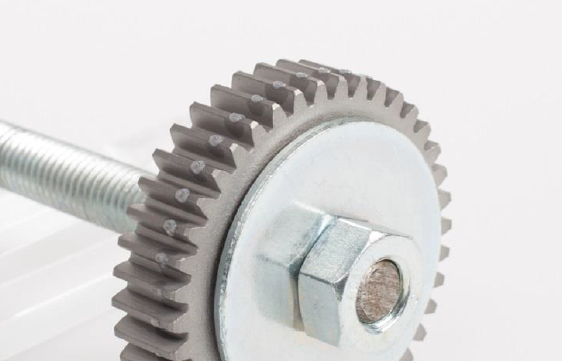
by Peter Swanson, MA (Cantab), managing director, Intertronics
Introduction
Lubrication of mechanical and electromechanical assemblies should be a precise science, with applied material volume and placement accuracy critical to effectiveness. No-one expects the control buttons in their car to leave grease on their fingers. Operators of precision equipment do not expect to find their parts contaminated by lubrication from the bearings.
It is essential that the lubricant be applied solely to the required location where there are mating components, preventing contamination of other components and areas. Excess grease or oil can result in product operating faults, aesthetic damage and costly wastage of the lubricant itself. Production environments should be kept clean with no mess caused by overspray; something which could also be a hazard.
As well as being delivered to the correct location within the assembly, good process control demands that the amount applied is reliably and reproducibly within the specified volumetric tolerance. Finally, the application methodology must keep up with the line speed, and in a high- throughput environment, this means that the dispensing has to be fast.
Accuracy and speed
An effective solution to delivering lubrication with such precision and speed was developed over 10 years ago by a machine building engineer and an electronics engineer, who collaborated to design and build the first Liquidyn P-Dot electro-pneumatic dispensing valve. Based on non-contact jetting technology, the valve was sufficiently compact to dispense small amounts of even high viscosity lubricant and, at the same time, robust enough to maintain reliable long-term operation in harsh production environments.
Subsequently, although the Liquidyn P-Dot valve has been the subject of a number of refinements, its basic features and modular design remain. The lubricant or other material to be dispensed is fed under pressure into the valve’s fluid chamber (fluidic). A pneumatically driven tappet is forced through the fluidic, ejecting the material out of a nozzle with high energy, and delivering a shot at a controlled volumetric size. A Liquidyn jetting valve can dispense these shots at a pre-determined volume at quantities starting at 3nl and at a frequency of up to 280 times per second. Larger volumes are simply built up by repeated shots and, because of the shot rate, very quickly. Lines and other patterns can be formed.
Unlike other lubricating systems which either drip or spray the medium, the valve jets each drop directly to its target location with high accuracy, precluding contamination of the component and surrounding areas. It can be positioned to jet lubricant into challenging areas such as cylinder bores, and with any orientation, including on to horizontal or overhead surfaces.
The jetting valve’s nozzle can be located from 2mm and up to 40mm from the surface to be lubricated. Because no contact is required to apply the lubricant, the process is more forgiving of uneven surfaces, surface finishes and tooling tolerances. Jetting removes the need to bring a dispensing needle into close proximity of the target surface, mitigating potential damage to needles and parts and speeding up the process by reducing valve or part manipulation.
Automation-ready
The valves are designed to be easily integrated into automated processes with robotics or on conveyorised lines, and can be actuated via a PLC. For stand-alone or development purposes, a controller is available.
In its normal state the valve is closed, eliminating dripping and consequential contamination or material wastage. In the event of interruption of power or compressed air supply – the valve defaults to its closed state.
Capabilities
The Liquidyn P-Dot can dispense shots from 3 nl to 200nl for very small assemblies such as watch movements or optical instruments. Other variations of the jetting technology (P-Jet) are capable of dispensing shots up to the size of a pea. Precise deposit size with an accuracy of better than 1 per cent is determined by nozzle diameter and geometry, and adjustment of the stroke of the tappet. Many applications demand such accuracy, an example being rotary position sensors where identical deposits of lubricant on to the ball bearings ensure equal frictional resistance for every sensor that comes off the production line.
Viscosities of material which can be dispensed vary from thin, watery fluids up to highly viscous pastes and greases (depending on the thixotropy), enabling effective application of lubricants – such as greases and heavy oils – and other media including adhesives, silicones, paints, fluxes, medical products and even highly abrasive systems.
The valve is easy to dismantle and clean, featuring a short, straight fluid path which is isolated and readily dismountable from the valve pneumatics and controls. Wetted parts are autoclavable, making the valve suitable for use in the medical and pharmaceutical industries.
Conclusion
This technology combines the accuracy and precision of a positive displacement dispensing technique with the speed and adaptability of the jetting principle. Employed in the application of lubricants, it can have positive impact on production efficiency, quality and costs.










Radio wave weapon knocks out drone swarms
Probably. A radio-controlled drone cannot be completely shielded to RF, else you´d lose the ability to control it. The fibre optical cable removes...